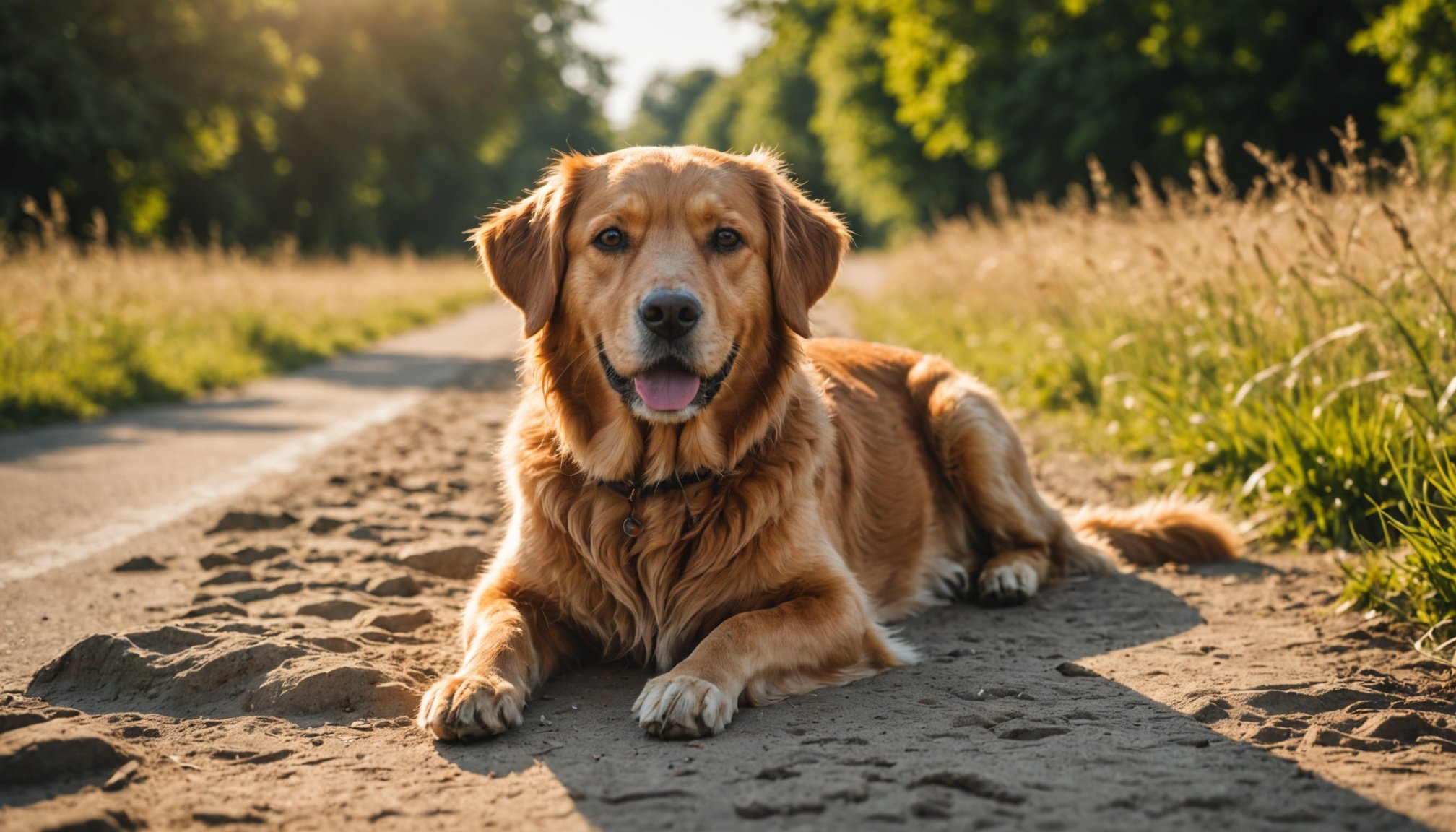Understanding Heatwaves and Their Impact on Pets
In the UK, a heatwave is recognised by prolonged periods of significantly higher temperatures than average, which can have dire consequences for pets. These rising temperatures can lead to serious health issues for various types of pets, ranging from dehydration and heatstroke to more severe complications. Ensuring pet safety during such climatic events is vital.
Each pet species will react differently to heatwaves. For instance, dogs are particularly susceptible to increased temperatures, especially flat-faced breeds such as Bulldogs and Pugs. Cats are generally more adaptive but can still overheat if exposed without shade or water. Smaller mammals and birds are also at risk due to their size and rapid metabolism, making them more vulnerable to temperature spikes.
Also to read : Ultimate Guide to Grooming Long-Haired Ferrets in the UK: Best Tips and Practices for a Healthy Coat
Given the UK climate and its recent shifts toward hotter summers, pet owners should prepare adequately. This involves provisioning shaded areas, ensuring adequate water supply, and knowing the signs of overheating, such as excessive panting or lethargy. Proactive steps, like adjusting walk times to cooler periods of the day and avoiding hot surfaces, can significantly mitigate risks, ensuring pet safety under these challenging circumstances.
Hydration Strategies for Pets
Ensuring adequate water intake is crucial for keeping your pet healthy, especially during hot weather. The recommended daily water intake for pets varies based on their size, diet, and activity level. Typically, a dog needs approximately one ounce of water per pound of body weight per day, while cats require about 3.5 to 4.5 ounces per five pounds.
In the same genre : Top Strategies for Successfully Socializing Your Newly Adopted Rescue Fox
During hotter months, pets may require more creative ways to meet their hydration needs. Encouraging them to drink sufficient water can sometimes be a challenge. One effective method is offering them ice cubes or frozen treats. Not only do these provide a fun way for pets to hydrate but also help them cool down.
To further increase water intake, you can place multiple water bowls around the house. Adding a splash of flavour, such as a little low-sodium broth, might make water more enticing. Cooling techniques like providing shaded rest areas and maintaining a comfortable indoor temperature can also prevent dehydration in pets.
Implementing these cooling techniques and encouraging regular water intake will help keep your pet healthy and well-hydrated throughout the warmer months.
Creating a Safe Indoor Environment
When it comes to indoor pet safety, ensuring a comfortable and safe space for your furry friends is paramount. Pets thrive in environments managed for optimal temperature and safety. One essential element of this is heat management. It is important to keep indoor spaces cool, especially during warmer months, to prevent pets from overheating.
Creating comfort zones with shaded areas is crucial. Position their resting areas away from direct sunlight and ensure ample ventilation. Shaded areas help maintain lower temperatures, reducing the risk of heat-related stress for pets.
Ventilation plays a key role in regulating temperature. Opening windows or using ceiling vents can enhance airflow, contributing to a more pleasant atmosphere for pets.
Additionally, the use of fans and air conditioning can make a significant difference in providing a balanced environment. While fans circulate air efficiently, air conditioning units actively lower the ambient temperature, making indoor settings much more comfortable for pets. Regularly checking and maintaining these systems ensures they function efficiently and prolong the longevity of a comfortable indoor setting. By focusing on these aspects, you can create a safe haven for your pets to relax and thrive.
Outdoor Activity Guidelines During Heatwaves
During heatwaves, caring for your pets outdoors requires extra vigilance. Opt for walking or exercising pets during cooler parts of the day, such as early mornings or late evenings. This avoids the risk of heatstroke when temperatures peak. Monitoring your pet’s energy levels and keeping them hydrated is crucial.
Exercise Tips
-
Avoid strenuous activities on particularly hot days.
-
Provide lots of water and shaded rest spots.
-
Switch pavement for grass to prevent burns on sensitive paws.
Safety Precautions
During outdoor time, keep a close eye on signs of overheating, like excessive panting or drooling. Immediate access to water and breaks in the shade can be lifesaving. If temperatures remain high throughout the day, consider indoor activities as an alternative.
Activities to Avoid and Safe Alternatives
Refrain from activities such as running or playing fetch on hot surfaces. Instead, try indoor games or swimming in a pet-safe pool. These alternatives keep your pets active without exposing them to dangerous conditions. This vigilance not only ensures their safety but also enhances their overall well-being in hot climates.
Recognizing Signs of Heat Stress in Pets
Understanding heat stress symptoms in pets is crucial for their well-being. Common indicators include excessive panting, drooling, and lethargy. Pets may also exhibit red or pale gums, increased heart rate, or vomiting. If you observe these symptoms, swift action is needed to ensure your pet’s health.
Begin by moving your pet to a cooler area immediately. Offer small amounts of water. However, do not force them to drink, as this can worsen their condition. Applying cool, not cold, water to their body can help reduce their temperature. Use wet towels or a fan to aid in cooling. If your pet does not improve within a few minutes, proceed to the next steps.
Emergency response is vital when symptoms persist or worsen. It is essential to seek veterinary assistance if your pet becomes unresponsive or appears confused. Remember, overly rapid cooling can lead to shock, a potentially life-threatening situation.
Prompt identification and response are essential in managing heat stress, preventing serious damage to your pet’s health. By being vigilant and prepared, you can safeguard your furry friend from harmful effects and ensure they remain healthy and happy.
Resources for Pet Owners in the UK
Navigating the challenges of keeping pets safe during heatwaves can be daunting. Fortunately, the UK offers a wealth of veterinary resources for support. Several veterinary practices provide invaluable heatwave advice, ensuring pet safety is a priority.
Veterinary Practices Offering Heatwave Advice
- PDSA: This national charity offers guidelines on preventing heatstroke.
- Blue Cross: Known for practical emergency services, they explain handling overheating.
- RSPCA: Extensive online resources highlight pet welfare during extreme temperatures.
National and Local Resources
Beyond individual practices, organisations like the RSPCA provide comprehensive guidelines for a variety of pets. They include advice on adequate hydration and safe exercise during extreme weather conditions. Furthermore, the National Pet Month website offers seasonal tips and community support forums, linking pet owners for shared experiences and advice.
Community Initiatives During Summer Heatwaves
Local communities rally during hot weather, increasing support through initiatives. Some regions establish temporary cooling stations for pets. Additionally, neighbourhood groups often orchestrate awareness campaigns, encouraging vigilant behaviour. Many owners appreciate local support, joining together to ensure every pet remains content and healthy. Through these combined efforts, pet owners can feel empowered and equipped to handle high temperatures.











